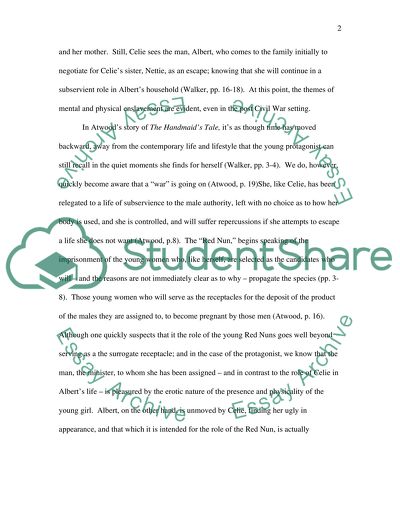Cite this document
(Parallels and Contrast in the Color Purple and the Handmaids Tale Book Report/Review, n.d.)
Parallels and Contrast in the Color Purple and the Handmaids Tale Book Report/Review. https://studentshare.org/literature/1538338-distinguishing-any-parallels-and-variations-within-the-texts-discuss-to-what-extent-female-power-could-be-said-to-exist-in-the-colour-purple-alice-walker-a
Parallels and Contrast in the Color Purple and the Handmaids Tale Book Report/Review. https://studentshare.org/literature/1538338-distinguishing-any-parallels-and-variations-within-the-texts-discuss-to-what-extent-female-power-could-be-said-to-exist-in-the-colour-purple-alice-walker-a
(Parallels and Contrast in the Color Purple and the Handmaids Tale Book Report/Review)
Parallels and Contrast in the Color Purple and the Handmaids Tale Book Report/Review. https://studentshare.org/literature/1538338-distinguishing-any-parallels-and-variations-within-the-texts-discuss-to-what-extent-female-power-could-be-said-to-exist-in-the-colour-purple-alice-walker-a.
Parallels and Contrast in the Color Purple and the Handmaids Tale Book Report/Review. https://studentshare.org/literature/1538338-distinguishing-any-parallels-and-variations-within-the-texts-discuss-to-what-extent-female-power-could-be-said-to-exist-in-the-colour-purple-alice-walker-a.
“Parallels and Contrast in the Color Purple and the Handmaids Tale Book Report/Review”. https://studentshare.org/literature/1538338-distinguishing-any-parallels-and-variations-within-the-texts-discuss-to-what-extent-female-power-could-be-said-to-exist-in-the-colour-purple-alice-walker-a.


